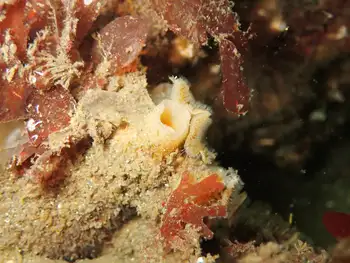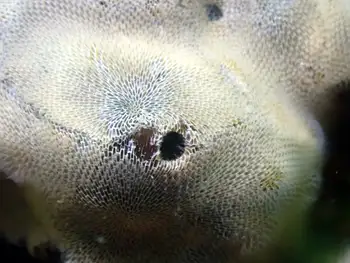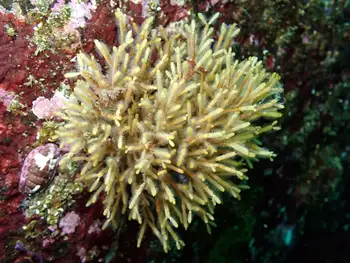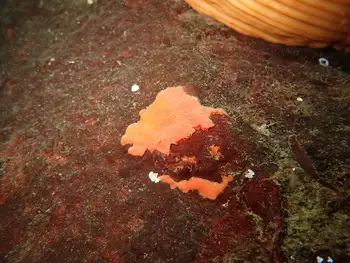Taxonomy
Animalia
Bryozoa
Gymnolaemata Cheilostomatida
Lip-mouthed Naked-throat Moss-animals Animals
Gymnolaemata are a class of Bryozoans. Gymnolaemata are sessile, mostly marine organisms and grow on the surfaces of rocks, kelp, and in some cases on animals, like fish. Zooids are cylindrical or flattened. The lophophore is protruded by action of muscles pulling on the frontal wall. This order includes the majority of living bryozoan species.
Gymnolaemata. Retrieved May, 08 2021, from en.wikipedia.org/wiki/Gymnolaemata.
Cheilostomatida, also called Cheilostomata, is an order of Bryozoa in the class Gymnolaemata. They are exclusively marine, colonial invertebrate animals. Cheilostome colonies are composed of calcium carbonate and grow on a variety of surfaces, including rocks, shells, seagrass and kelps. The colony shapes range from simple encrusting sheets to erect branching and even unattached forms. As in other bryozoan groups, each colony is composed of a few to thousands of individual polypides. Each individual has a U-shaped gut, and no respiratory, circulatory, or nerve system. Unique among bryozoans, cheilostome polypides are housed in a box-shaped zooids, which do not grow larger once the zooid is mature. The opening of through which the polypide protrudes is protected by a calcareous or chitinous lidlike structure, an operculum. Cheilostomes possess avicularia, which have modified the operculum into a range of mandibles (possibly for defense) or hair-like setae (possibly for cleaning).
Cheilostomatida. Retrieved May, 08 2021, from en.wikipedia.org/wiki/Cheilostomatida.




